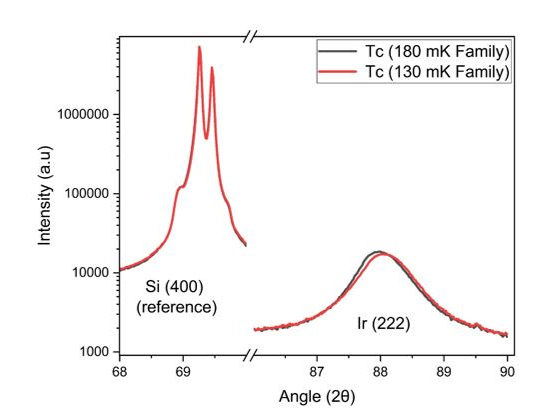ED-7-6
Correlation of critical temperature and reticular stress on Iridium/Gold based TES detectors.
10:30-10:45 30/11/2023
*E. Celasco1,2, L. Ferrari Barusso1,2, G. Gallucci1,2, D. Grosso1,2, P. Manfrinetti3, K. Niazi1, D. Repetto1, M. Schott1, F. Gatti1,2
1. Physics Department,University of Genoa, Genoa, 16146 Italy
2. INFN,Genoa, Genoa, 16146 Italy
3. Chemistry Deparment University of Genoa, Genoa, 16146 Italy
The Low temperature detector group of UniGe is developing superconducting Transition Edge Sensors (TESs) Iridium based detectors. It’s main applications is X-ray astrophysics space missions [1].
The most important constraint for this application is the critical temperature Tc the one required by the mission.
Fist of all a detailed morphological chemical compositional characterization of the bare Ir film has been performed, checking the thickness film reproducibility, with Field Emission Scanning Electron Microscopy and avoiding possible film contaminations with X-ray Photoemission Spectroscopy.
Secondly we focussed our attention on Tc on the bare Iridium film, than was possible tune its Tc with gold film thanks to the proximity effect.
We found an interesting behaviour on the final Tc of the analysed samples:
two classes of films with different Tc were founded, one at about the critical temperature of the Iridium bulk and the other one at about 1.6 times.
A detailed X-Ray Diffraction shows that this behaviour is caused to the reticular stress between the Ir/Au and the Silicon substrate (as reported in fig1) and it is related to the grain dimension.
The Ir/Au based TESs are also tested, in our laboratory, as single photon detector.
[1] Development of a TES for Antenna-Coupled Bolometer for Cosmic Microwave Background Detection
E. Celasco, L. Ferrari Barusso, M. De Gerone, G. Gallucci, D. Grosso, P. Manfrinetti, G. Manzato, L. Repetto, M. Schott, F. Gatti
IEEE Transactions on Applied Superconductivity, 2023, 33(1), 2100105
The authors would like to thank Mrs M. Rigano of the University of Genova, Mr L. Parodi, Mr A. Bevilacqua and Mr F. Siccardi of INFN of Genova for their work and the technical support
